A word about the Tee fitting. The 'straight" Tee shown in the middle picture, left side is real nice for this project. However most stores only carry the type on the right side. The latter will work but be sure to orientation all of them in the same direction so the frame work comes out straight. Also, the latter fitting is less cost. If this is your first antenna you may consider laying all the parts out to get oriented on assembly. You get one chance to get it right, with the glue setting up in 10 seconds after application.
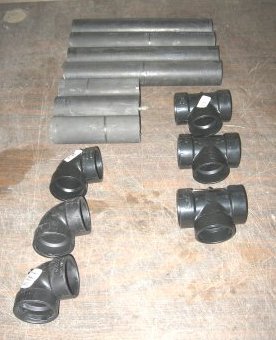
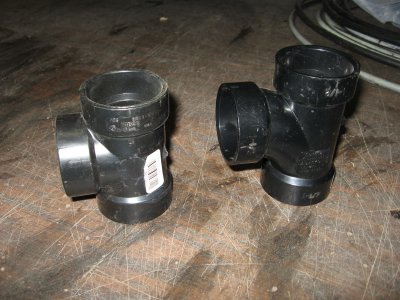
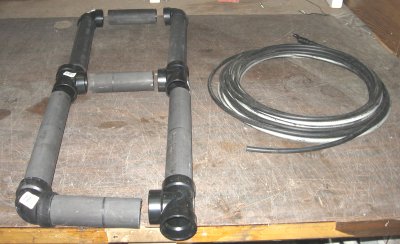
For the electrical part cut a piece of coax 4-foot. One end strip back 2". Cut the rod in two; for two 12" pieces. Solder each rod the coax's center radiator and the other to the shield (return). An alternative way is not to use any rods. In this case make the coax 1 foot less. Strip the coax back 13" to make up a set of 12" elements. You'll be pulling the center out of the braid. Tricky task, but do able. Then terminate the other end with the appropriate connector. The finished product will make a 24" pigtail. If this is too long make your adjustment as needed. SRG installations call for an N-male for antenna "pig tails". 24" is a good overall length to work with on the tower installation, taping, sealing under most weather conditions.
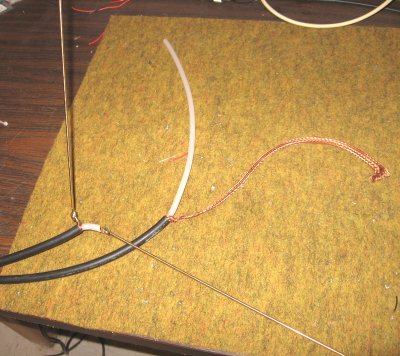
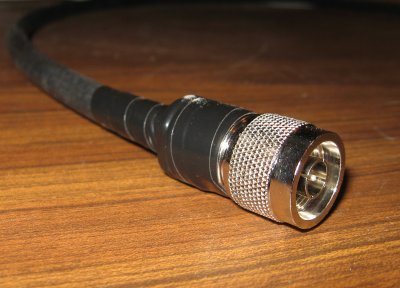
The other version instructed to assemble all the pipe first, then "fish" the coax inside. While this works, ok, here's an alternate way; Starting with the feed point, slit the pipe and its fittings around the coax. Then glue all of them in place. You'll get some glue on the coax, however should have no impact on performance.
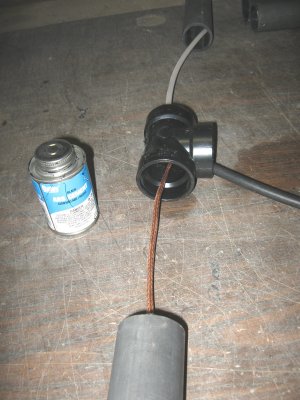
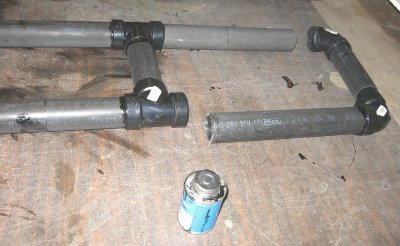
You can foam the inside now or later with expanding foam (insulation) that comes in a spray can at most hardward stores. Drill a hole just big enough for the nozzle to fit in. A normal spray can will do two antennas nicely. The excess will push out to the bottom. Just leave it to dry, normally overnight. The hardened foam is far easier to clean up (and cut-out) over the guey, sticky mess. Foaming will nicely secure everything inside against vibration (boucing in a truck to the site, etc.) and seal the bottom from bugs, etc.
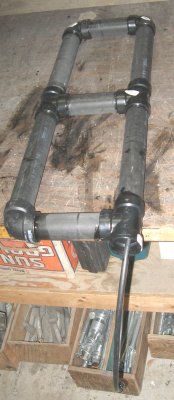
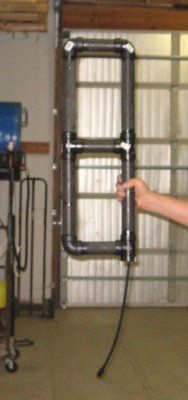
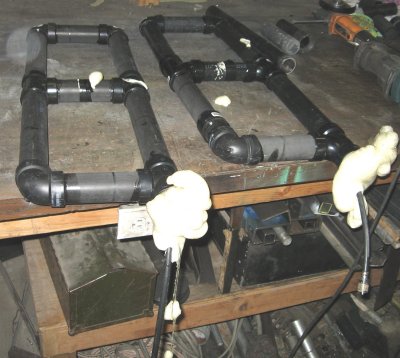
Now you can check the return loss, either with a thru-line watt meter, or better yet, antenna analyzer. If you suspect "RF spill-over" (lack of decoupling) try a couple loops in the line as a "choke".
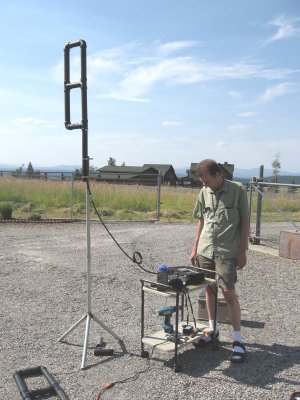
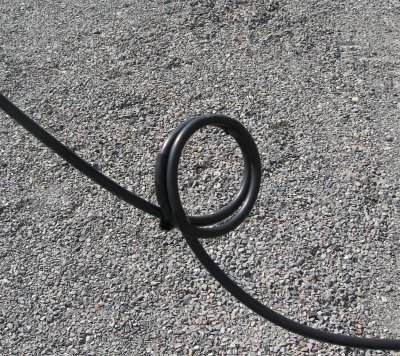
Here's a couple sample sweeps, one without the choke and one with.
A "chart" version is availible. Note the choke affects the resonant frequency:
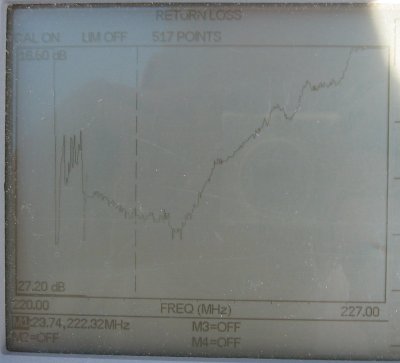
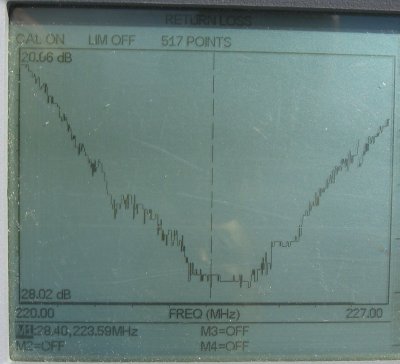
![[SRG home Direction]](images/srghome.gif)